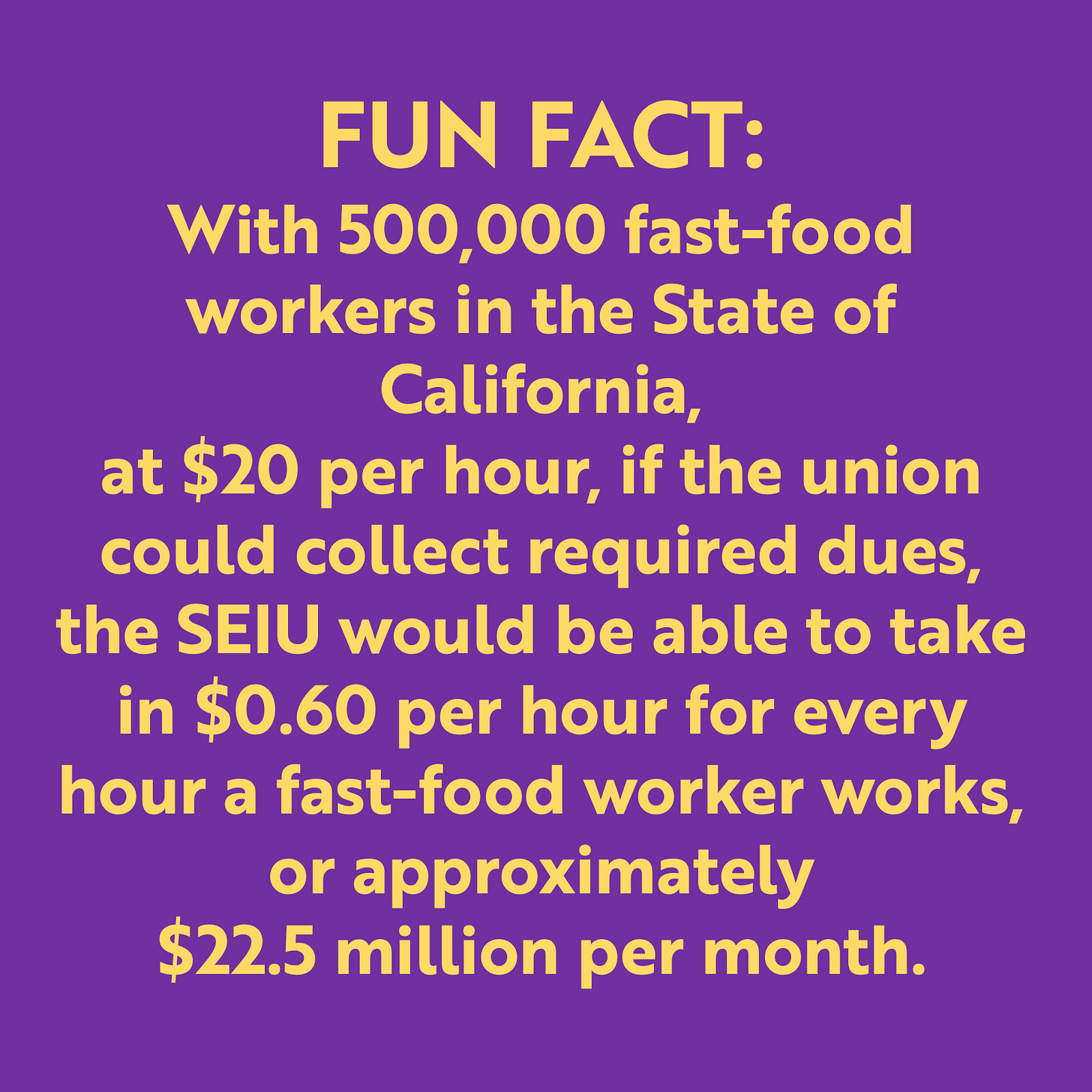SEIU's 'Fight for $15 and a Union' Rebrands Itself Simply As 'Fight For A Union'
The SEIU's 2009 blueprint to unionize fast-food workers through a "living wage" has returned to its roots.
By Peter List, Editor | May 1, 2024
The Service Employees International Union (SEIU) campaign to unionize the fast-food industry, which became the “Fight for $15 and a union”, is dropping its famous brand to simply "Fight for A Union.”
In a video posted to TikTok, the SEIU-affiliated organization announced the brand change to its 449,000 followers:
“Originally launched as ‘Fight for $15 and a Union,’ the campaign pivoted to focus on its demand for a $15 minimum wage and gained successes in raising minimum wage laws across numerous states and cities,” ” reported OnLabor.com.
“In light of these successes (and perhaps in light of the emerging discourse surrounding the inadequacy of a $15 minimum wage),” OnLabor.com stated, “the movement’s organizers have rebranded the campaign to ‘Fight for a Union’ in order to focus on its ‘demand for every worker to have a union.’”
Indeed, SEIU’s original 2009 blueprint for what later became the “Fight For $15” campaign had a singular goal: Use a “living wage as a vehicle” to unionize the fast-food industry.
“Use a living wage as a vehicle to excite, build momentum, build worker lists/lD potential leaders and potentially support collective bargaining,” the union blueprint stated. “We believe that we will have enough traction with an ordinance to use as a legitimate tool for organizing and potentially as legislation to raise standards.”
Over the next few years, the blueprint changed slightly, the “living wage” amount ($15) was decided on by activists at a meeting in New York City, and the first Fight for $15 strike was launched in 2012.
Over the years, the Fight for $15 (and a union) campaign was successful in changing the national narrative and in getting a number of states and municipalities to raise their minimum wages—the most notable is California, which just increased the minimum wage for fast-food workers to $20 per hour.
However, despite spending up to $180 million on the project and its “strike in the box” over the last 15 years, the SEIU’s primary goal—to unionize the fast-food industry—has remained elusive.
In California—which, as it is not a Right-to-Work state, allows for workers to be fired if they refuse to pay union dues—one of the SEIU’s largest locals charges 3% of gross wages (up to $45 per month) for union dues.
In addition to not having a collective bargaining agreement with mandatory payments from fast-food workers, with thereby making it impossible to get a return on its investment, with inflation having impacted much of the U.S. over the last few years, a $15 minimum wage is already lower than what many employers are paying entry-level workers now.
As a result, the Fight for $15 is not longer $15, it is now merely “Fight for a Union,” and aim for $25 or $30.
With SEIU president Mary Kay Henry—who oversaw much of the Fight for $15 campaign—stepping down this month, whether the SEIU and its allies succeed in achieving its original 2009 goal remains to be seen.







